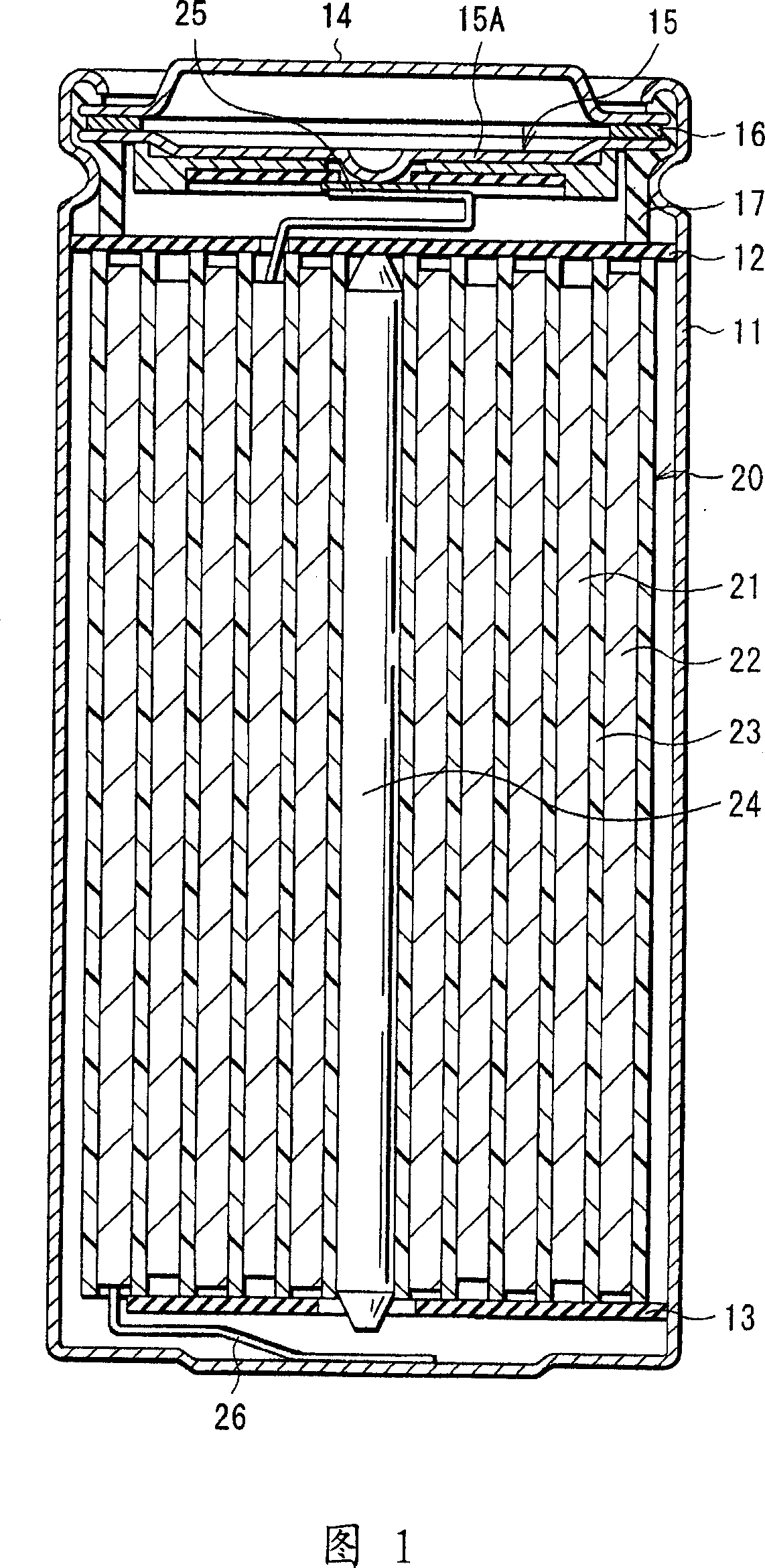Anode active substance and battery
A negative electrode active material and battery technology, applied in the direction of active material electrodes, negative electrodes, dry batteries, etc., can solve the problems of large lag in the shape of charge and discharge curves, no significant improvement can be expected, and low battery discharge voltage to achieve improved cycle characteristics, excellent cycle characteristics, and the effect of reducing reactivity
- Summary
- Abstract
- Description
- Claims
- Application Information
AI Technical Summary
Problems solved by technology
Method used
Image
Examples
Embodiment 1-1 to 1-10
[0104] First, a negative electrode active material is formed. As raw materials, tin powder, iron powder and carbon powder were prepared. Tin powder and iron powder are alloyed to form a tin-iron alloy powder, and carbon powder is then added to the powder and dry blended. Regarding the raw material ratio, the ratio of iron to the total amount of tin and iron (hereinafter referred to as the Fe / (Sn+Fe) ratio) is constantly maintained at 32% by weight, and the raw material ratio of carbon is 12% by weight to 30% by weight. range changes. Subsequently, 20 g of this mixture and about 400 g of corundum having a diameter of 9 mm were placed in a reactor of a planetary ball mill of Ito Seisakusho Co., Ltd. Next, the atmosphere inside the reactor was replaced with an argon atmosphere. Then, the 10 minute run at 250 rpm and the 10 minute rest were repeated until the total run time reached 30 hours. After that, the reactor was cooled to room temperature, and the synthesized negative a...
Embodiment 2-1 to 2-8
[0119] Negative electrode active materials and secondary batteries were fabricated in the same manner as in Examples 1-1 to 1-10, except that the ratio of raw materials among tin, iron, and carbon was changed as shown in Table 2. Specifically, the raw material ratio of carbon was kept constant at 30.0% by weight, and the Fe / (Sn+Fe) ratio was varied within a range of 26% by weight to 48% by weight.
[0120] Raw material ratio (weight%)
Analysis value (weight%)
initial charge
(mAh / g)
capacity
Keep
Rate(%)
Fe
sn
C
Fe
sn
C
Fe / (Sn
+Fe)
Example 2-1
18.2
51.8
30.0
18.4
51.4
29.7
26.4
596.7
53
Example 2-2
20.3
49.7
30.0
20.6
49.4
29.7
29.4
605.3
60
Examples 1-10
22.4
47.6
30.0
22.6
47.3
29.7
32.3
5...
Embodiment 3-1 to 3-8
[0126] Anode active materials and secondary batteries were formed in the same manner as in Examples 1-1 to 1-10, except that the raw material ratios among tin, iron, and carbon were changed as shown in Table 3. Specifically, the raw material ratio of carbon was kept constant at 20.0% by weight, and the Fe / (Sn+Fe) ratio was varied within a range of 26% by weight to 48% by weight.
[0127] Raw material ratio (weight%)
Analysis value (weight%)
initial charge
(mAh / g)
capacity
Keep
Rate(%)
Fe
sn
C
Fe
sn
C
Fe / (Sn
+Fe)
Example 3-1
20.8
59.2
20.0
21.1
58.8
19.8
26.4
642.3
76
Example 3-2
23.2
56.8
20.0
23.5
56.4
19.8
29.4
651.6
82
Example 1-5
25.6
54.4
20.0
25.8
54.0
19.8
32.3
644.2
85
...
PUM
| Property | Measurement | Unit |
|---|---|---|
| boiling point | aaaaa | aaaaa |
Abstract
Description
Claims
Application Information
 Login to View More
Login to View More - R&D
- Intellectual Property
- Life Sciences
- Materials
- Tech Scout
- Unparalleled Data Quality
- Higher Quality Content
- 60% Fewer Hallucinations
Browse by: Latest US Patents, China's latest patents, Technical Efficacy Thesaurus, Application Domain, Technology Topic, Popular Technical Reports.
© 2025 PatSnap. All rights reserved.Legal|Privacy policy|Modern Slavery Act Transparency Statement|Sitemap|About US| Contact US: help@patsnap.com



